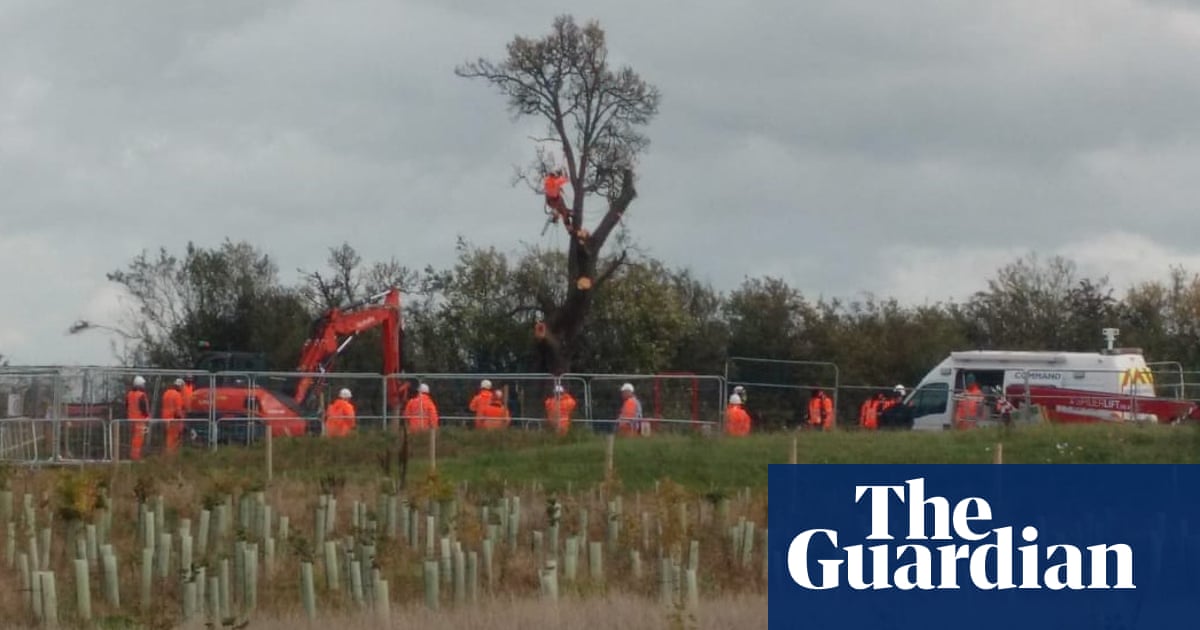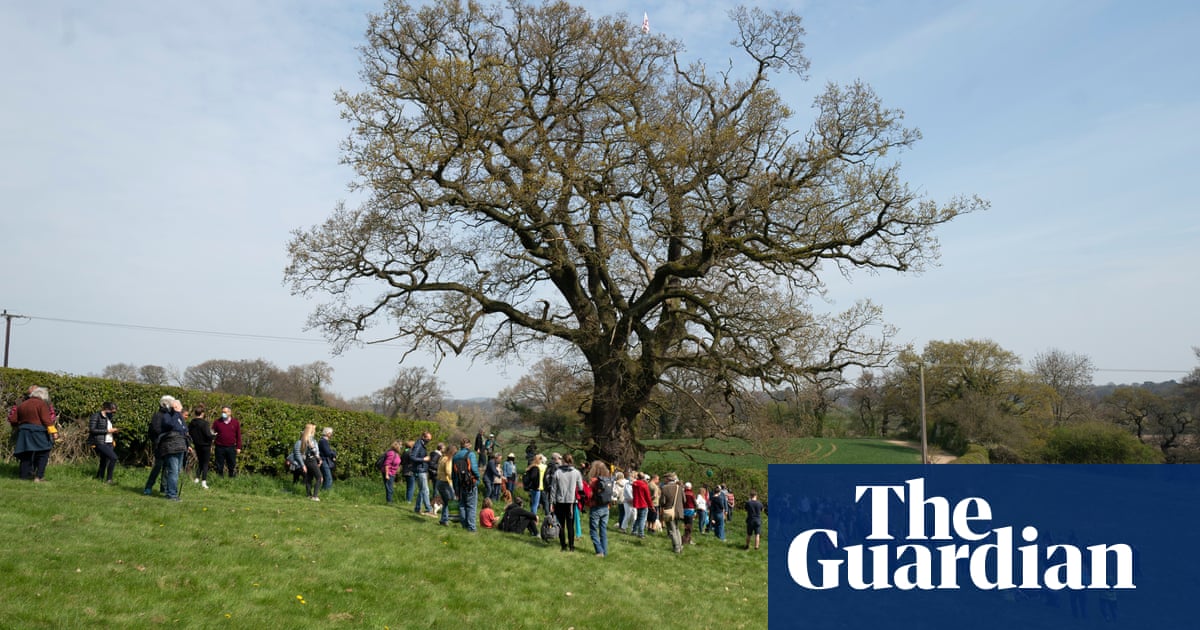
A former tree of the year that was chopped down to make way for HS2 is alive and well, regrowing from its transplanted stump.
The pear tree in Cubbington, Warwickshire, thought to be more than 250 years old, became a cause célèbre when it was first threatened with destruction. Despite having won the tree of the year award in 2015 and thousands having signed a petition to save it, the tree was felled in 2020 by HS2 contractors.
It was feared that attempts to keep alive the much-loved tree – growing in a hedge beside an ancient woodland and thought to be the second oldest pear in Britain – would fail because its trunk was hollow.
But to the delight of local people, the stump and root ball, which was moved by contractors and replanted in a field 100 metres from its original location, is vigorously sprouting new shoots and leaves.
“We were very surprised and absolutely delighted, although of course it will never be the same again,” said Rosemary Guiot, a resident of Cubbington village.
According to locals, the stump is regrowing because it had the good fortune to be planted in heavy clay soils that stayed moist during recent dry summers. Dry conditions have killed off thousands of young saplings planted by HS2 contractors in mitigation for line-cutting through the ancient South Cubbington Wood.
Amy Middlemist, the landscape lead at the contractors Balfour Beatty Vinci, said: “We’re thrilled that the Cubbington pear tree is living on in its new location, within one of HS2’s thriving new habitats for wildlife. Regrowth has happened because the tree’s root system, with the right amount of nutrients, has stored some of the energy produced in photosynthesis and directed it into new growth.”
Despite pleas by residents and conservationists for a tunnel under the pear and South Cubbington Wood, the high-speed line has cut through the ancient wood. In mitigation for the loss of 2 hectares of ancient woodland, HS2 has planted 60,000 new trees on 17 hectares of land around the wood, with 6 hectares of broadleaved trees linking it to the River Leam corridor.
Middlemist added: “We continue to deliver HS2’s ambitious landscape and habitat creation programme in this area, including building two green bridges which will reconnect public footpaths and wildlife corridors.”
The Cubbington pear also lives on across the village of Cubbington, thanks to local people who obtained the assistance of an expert in grafting ancient pears.
Residents took cuttings from the tree before it was chopped down and Paul Labous, a horticulturist at Shuttleworth agricultural college, successfully grafted the cuttings to new rootstock, returning 15 young trees to the community.
The pear’s offspring have been planted in the churchyard, at two primary schools and in nature reserves and parks farther afield.
HS2 has followed Labous’s methodology and used a commercial nursery to produce 40 further saplings, which have also been planted in the area.
But the survival of the original tree is an unexpected bonus for locals.
Unlike many fruit trees, the original pear was not a grafted tree and so, after many more years, the shoots from its stump should eventually produce the same pears that the ancient tree once did – “not gourmet pears but nice to eat”, according to Guiot.
While HS2 proclaims the success of one of its controversial environmental measures, Cubbington residents prefer to see the pear’s survival as a sign of the resilience of nature.
“It’s sort of two fingers to HS2,” said Guiot.












